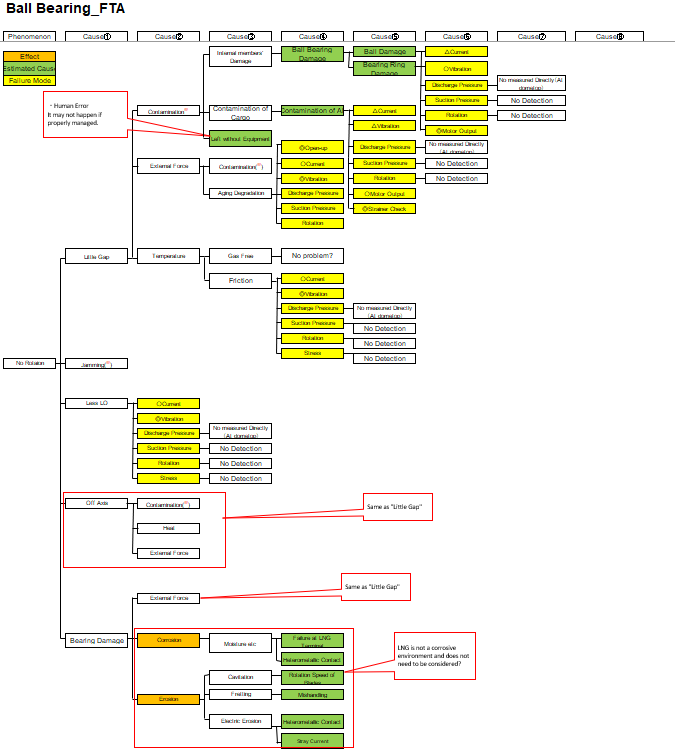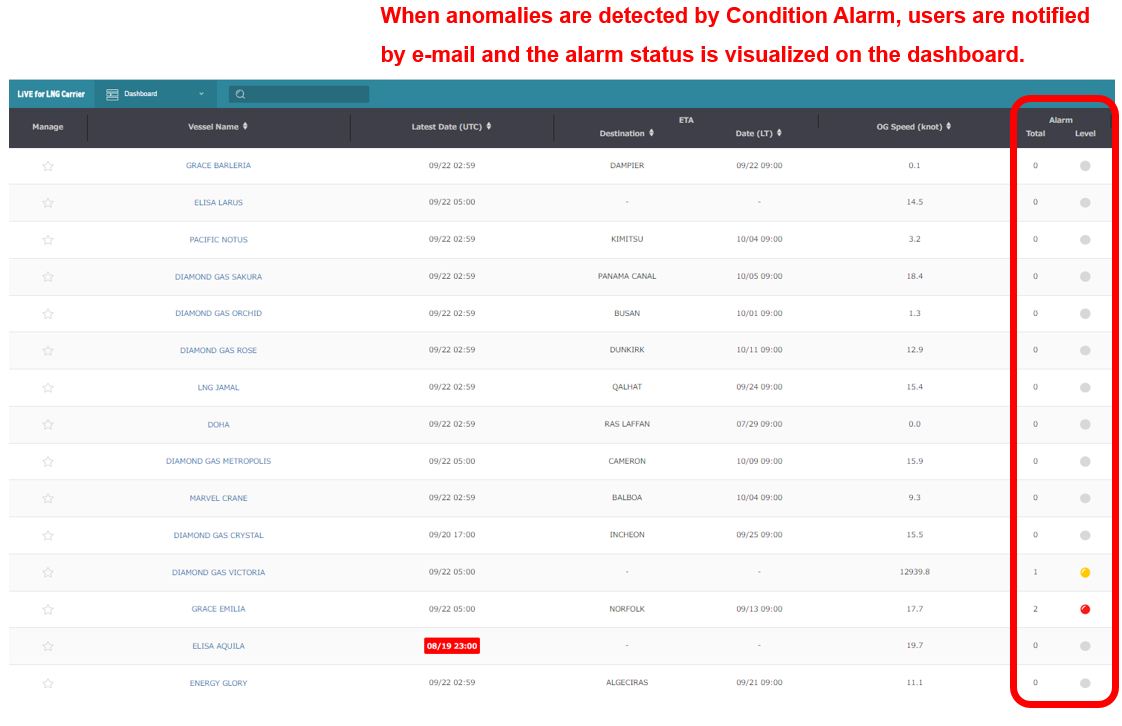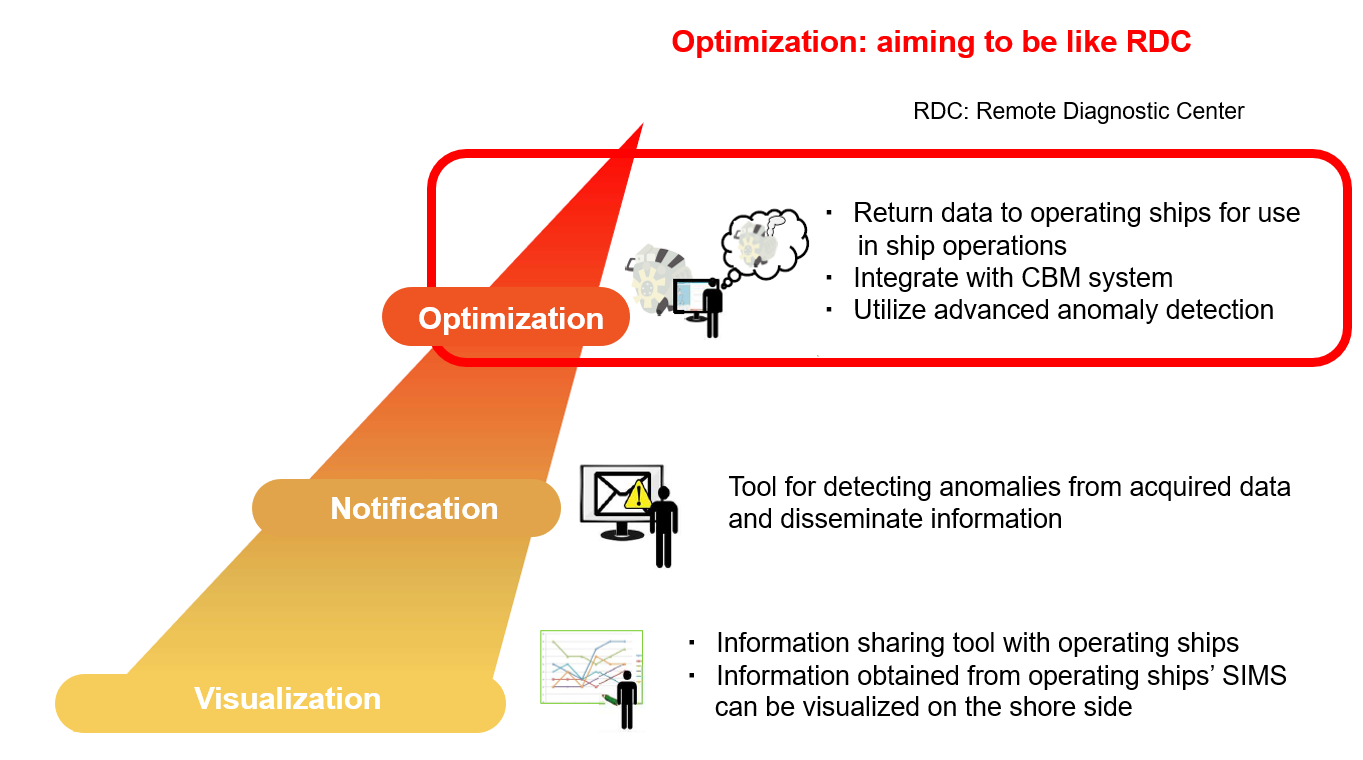LNG R&D
October 3, 2022
Condition Based Maintenance (CBM) study for LNG-related equipment
LNG*1-related equipment such as LNG cargo pumps and gas compressors*2 must be kept in good operating condition through proper maintenance, as a breakdown of such equipment can cause very serious damage by stopping the loading, unloading, and voyage of ship. Generally, onboard equipment needs overhaul inspection at regular intervals, and any parts that are subject to wear and tear need to be replaced uniformly, which is called Time Based Maintenance (TBM). In this method, wear and tear may occur in a shorter period of time than the specified overhaul period due to equipment anomalies or individual differences, resulting in major problems during operation. Conversely, in some cases, even parts that do not require overhaul inspection or replacement despite their sound condition are subject to maintenance, resulting in inefficient maintenance. CBM*3, by contrast, aims for performing maintenance at the appropriate time and before major problems occur, by monitoring the condition of equipment to detect and respond to abnormalities at an early stage and to confirm the soundness of the equipment.
In the CBM study for LNG cargo pumps, we conducted a study with the pump manufacturer based on the premise that a vibration meter would be installed on a newly built LNG carrier to monitor the condition of the LNG cargo pumps. By utilizing FTA*4 and risk assessment methods, it was confirmed that the method of monitoring the condition of the ball bearings of the impeller shaft by measuring the vibration would be suitable for LNG cargo pumps, and the cost benefits of introducing CBM were calculated.

An example of FTA
Utilization of SIMS data from LNG carriers
Currently, the anomaly detection system is in operation for general merchant vessels, which utilizes SIMS*5 data to monitor the condition of onboard equipment by the shore side and promptly alerts crew members of any anomaly to assist them. We also plan to monitor the condition of LNG carriers utilizing the anomaly detection system. Since LNG carriers have LNG cargo-related equipment and LNG-fueled engines that need to be monitored, we are currently working on the selection of the data and logic required to detect anomalies in the equipment.
One of the anomaly detection methods is condition alarm, which uses arbitrary SIMS data and outputs an alarm by setting simple logic and threshold values. By implementing anomaly detection logic for LNG carriers, onshore staff can easily detect anomalies of LNG carriers, and contribute to safe vessel operation.

Dashboard for LNG carriers

(Writers: Sota Kanno, Tsuyoshi Tera, Motoki Furukawa)
*1 LNG (Liquified Natural Gas): It is transported and stored at approximately -162°C and used as fuel for power generation, raw material for city gas, etc.
*2 LNG Cargo Pump and Gas Compressor: LNG Cargo Pumps are used for unloading LNG. Gas Compressors are used to transfer gas vaporized in LNG tanks to onshore facilities or onboard equipment.
*3 Condition Based Maintenance: to perform maintenance and inspections based on the condition of the equipment.
*4 FTA (Fault Tree Analysis): A method that enumerates the possible causes of equipment failures and then systematically delves into each cause and sub-divides it into component characteristics that could be the root cause.
*5 SIMS (Ship Information Management System): A system developed by MTI and NYK to monitor various onboard data and utilize it for optimal ship operations.
Contact
For additional information about this, please contact us by our inquiry form.
